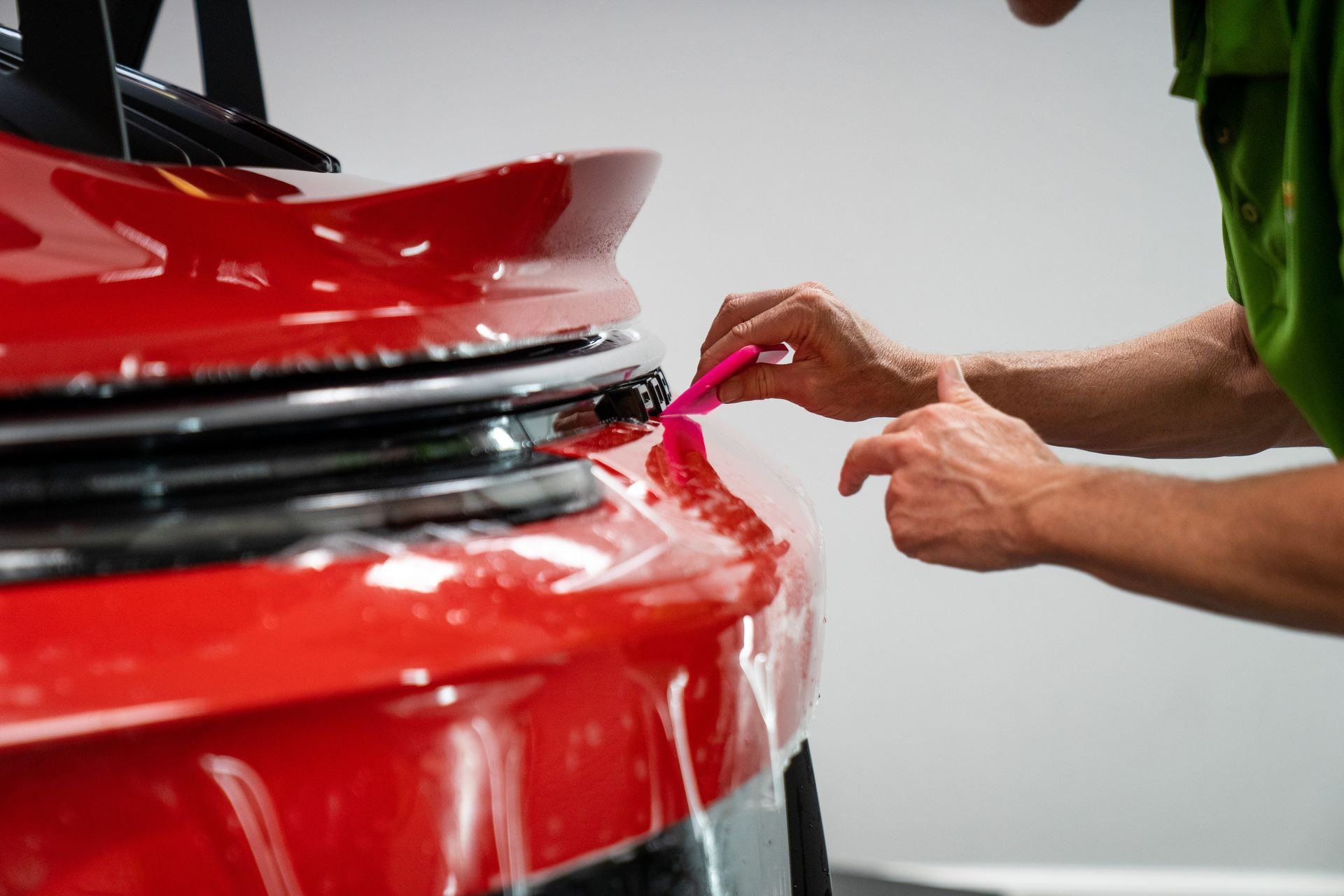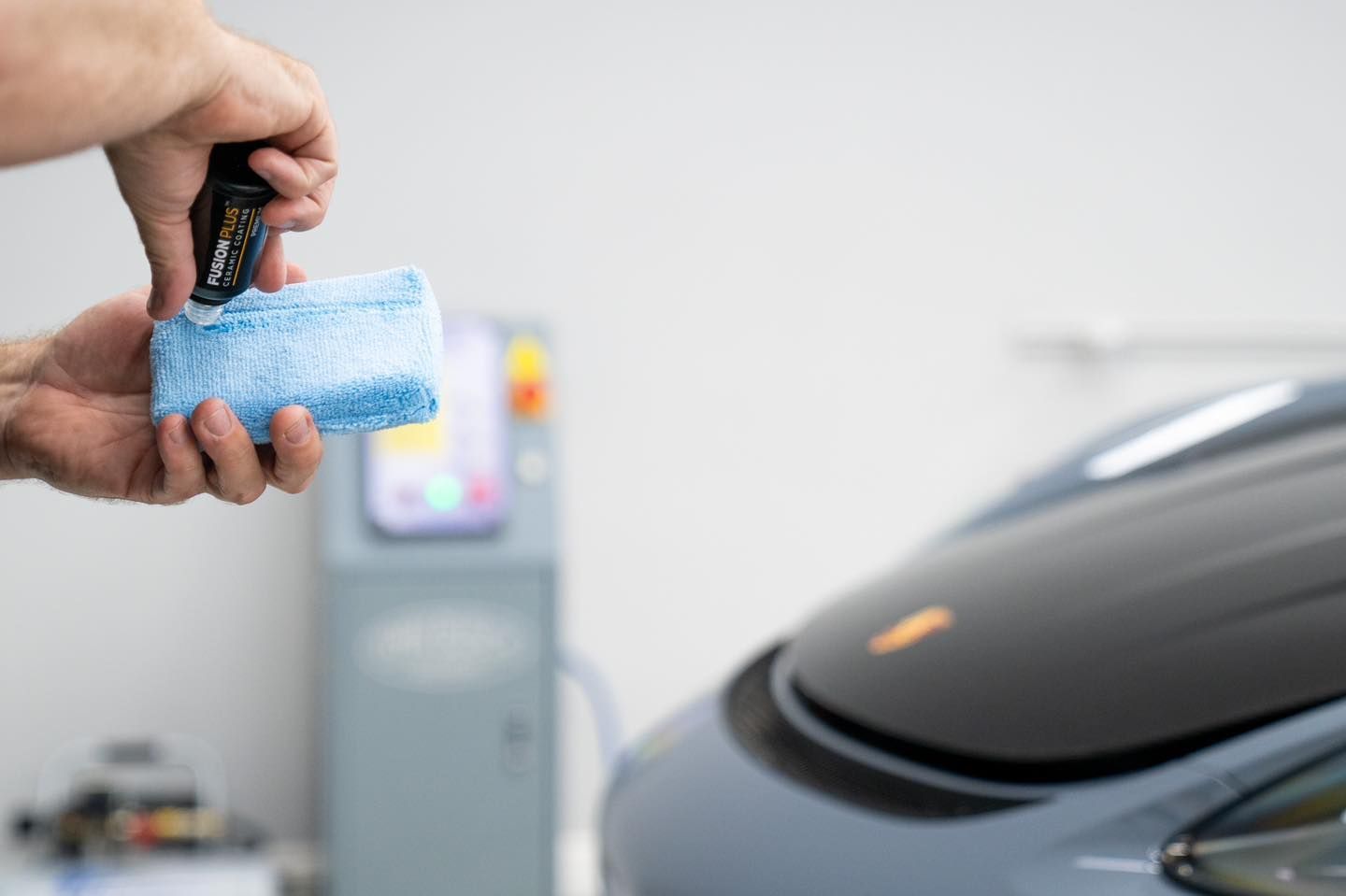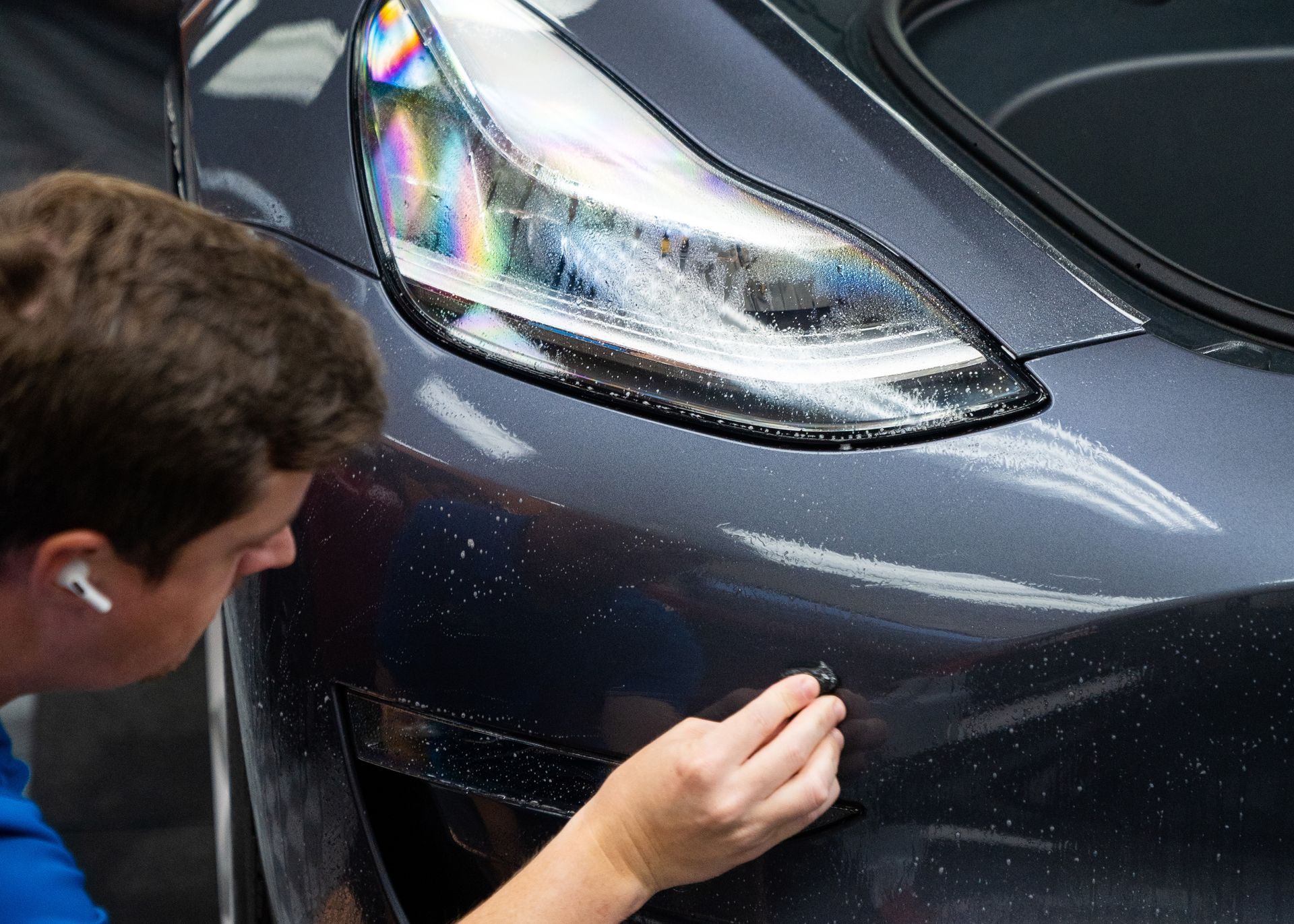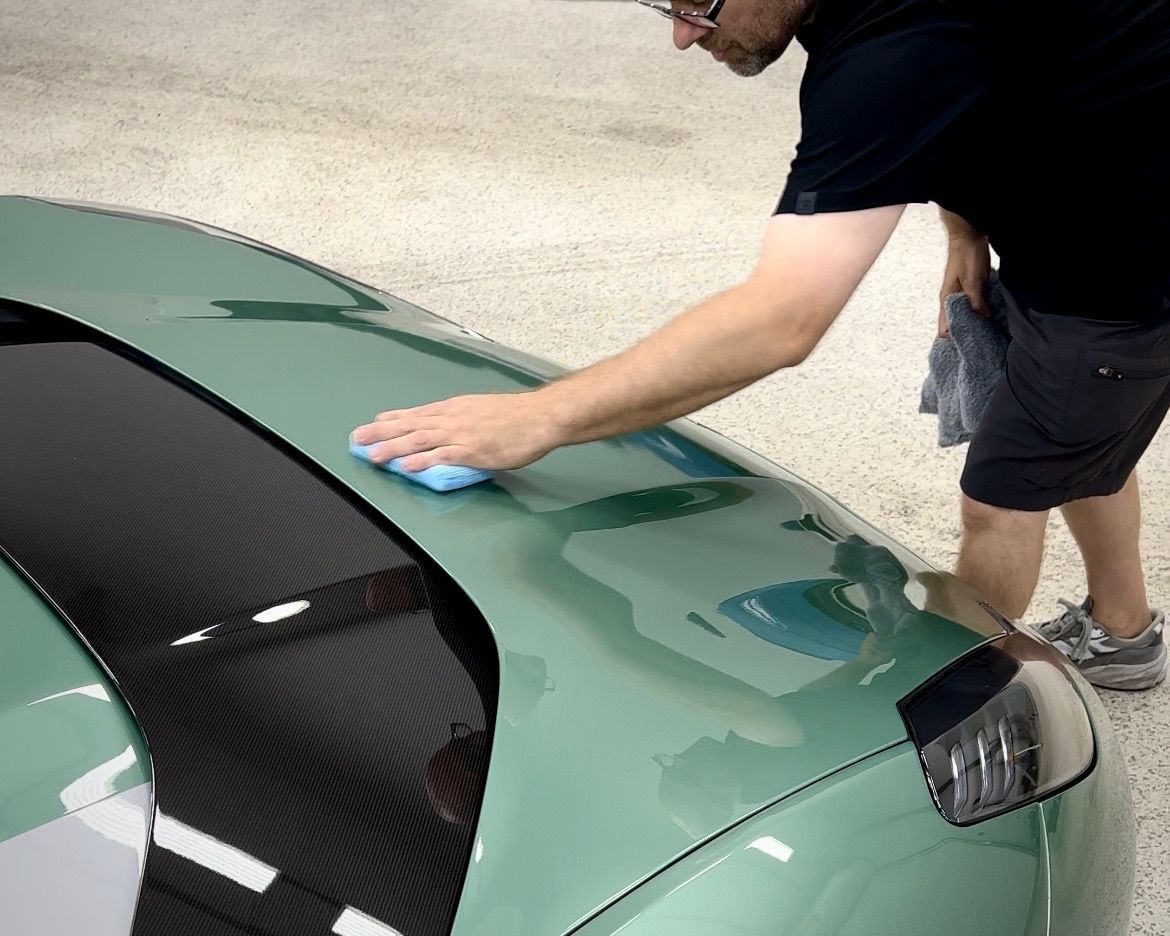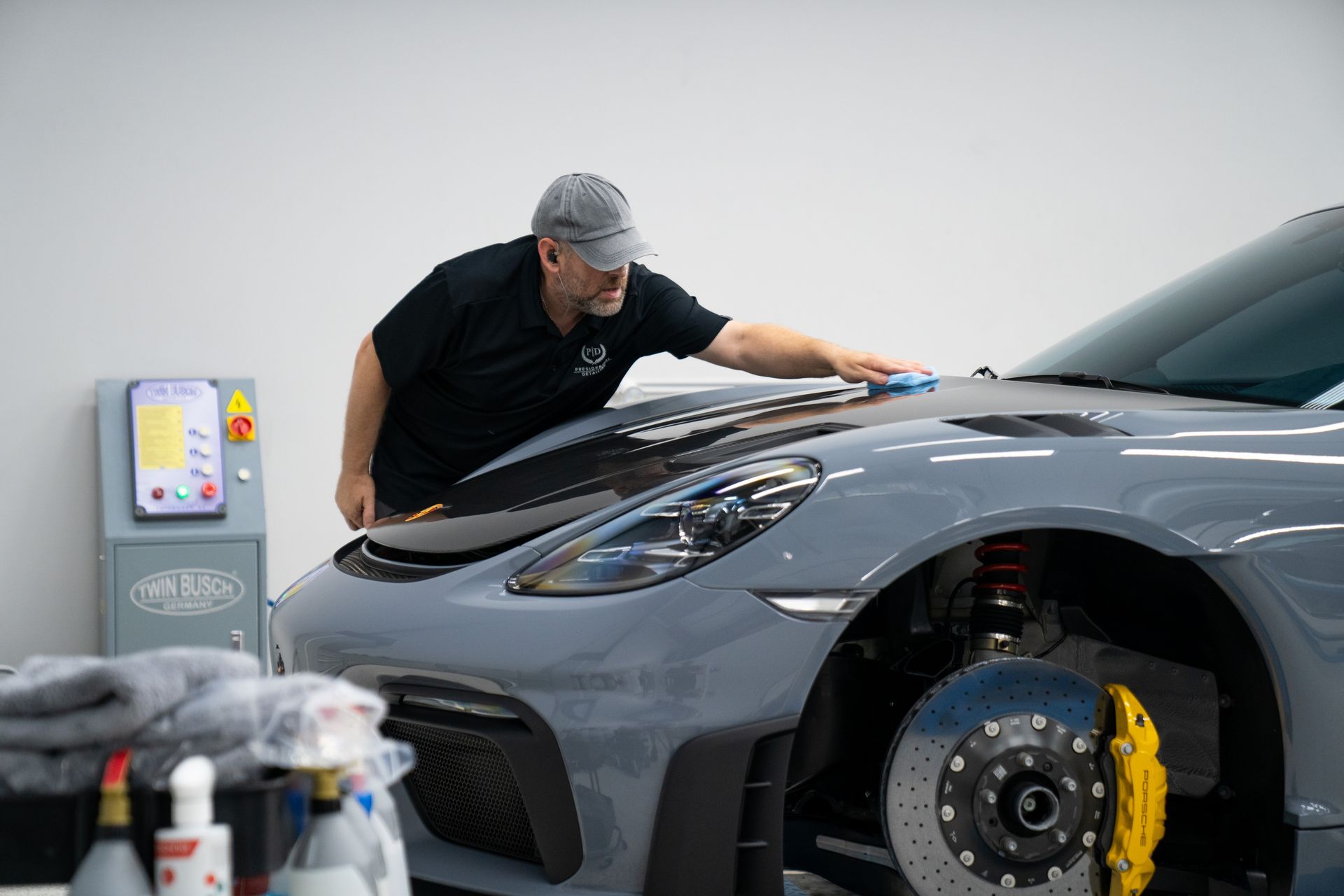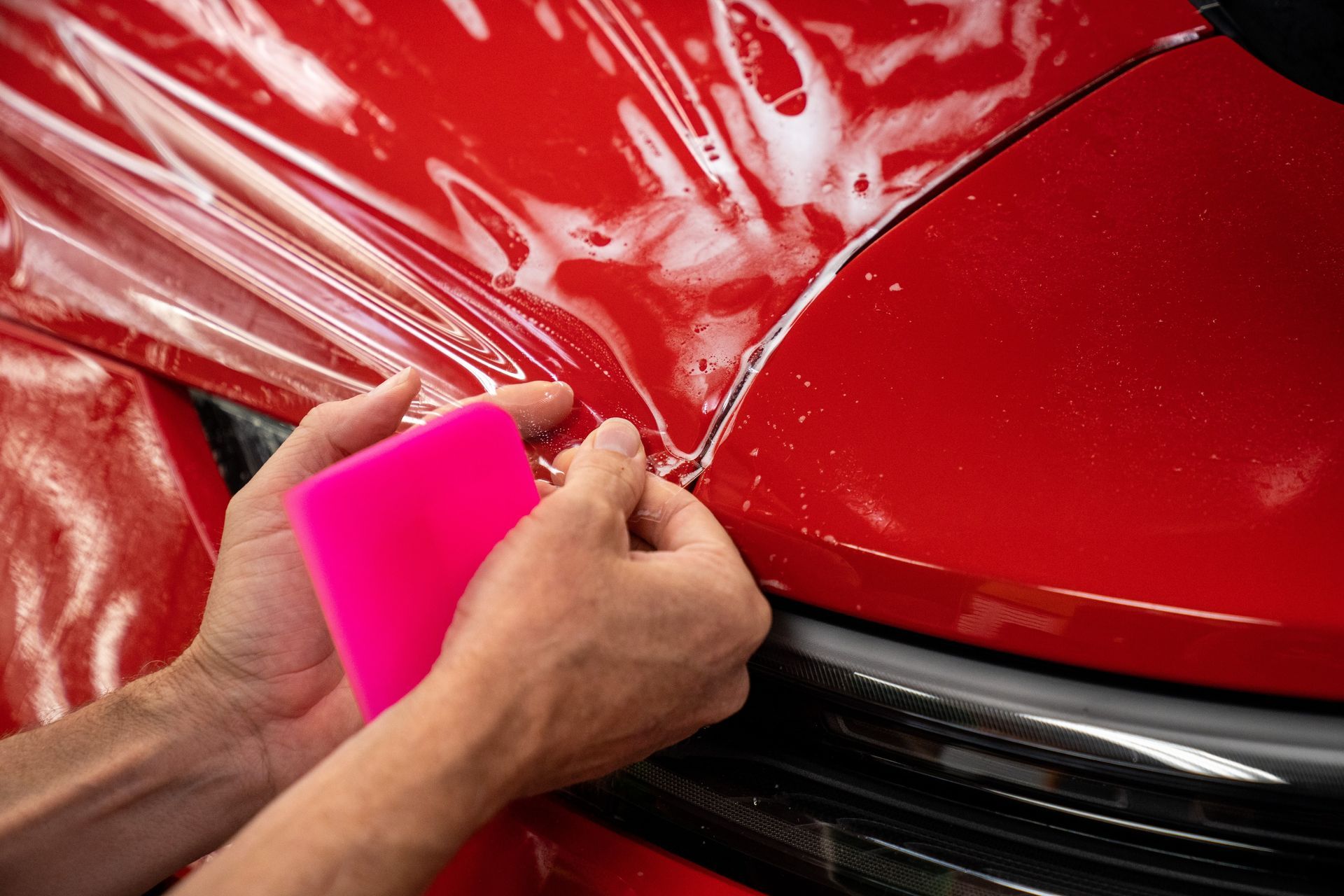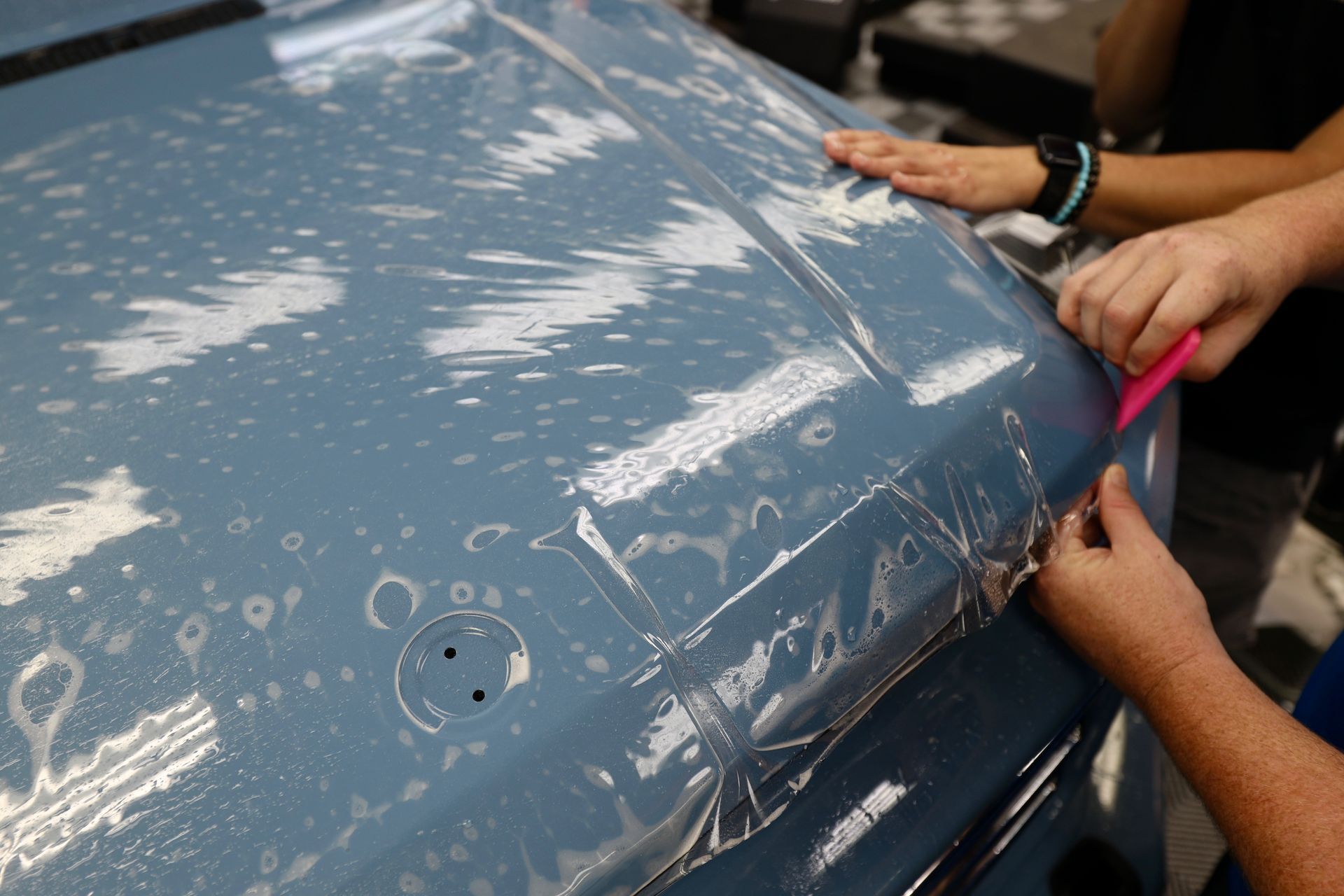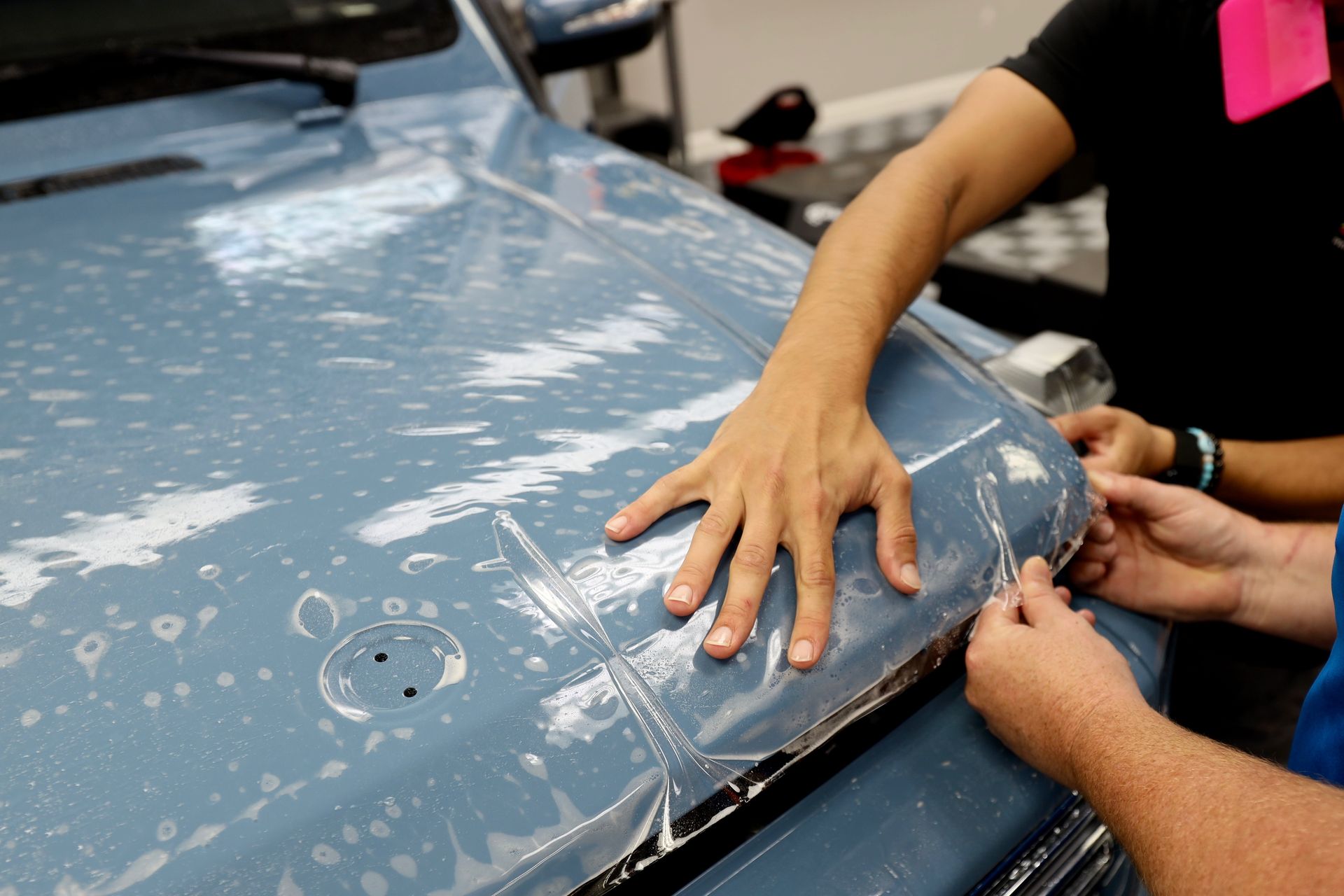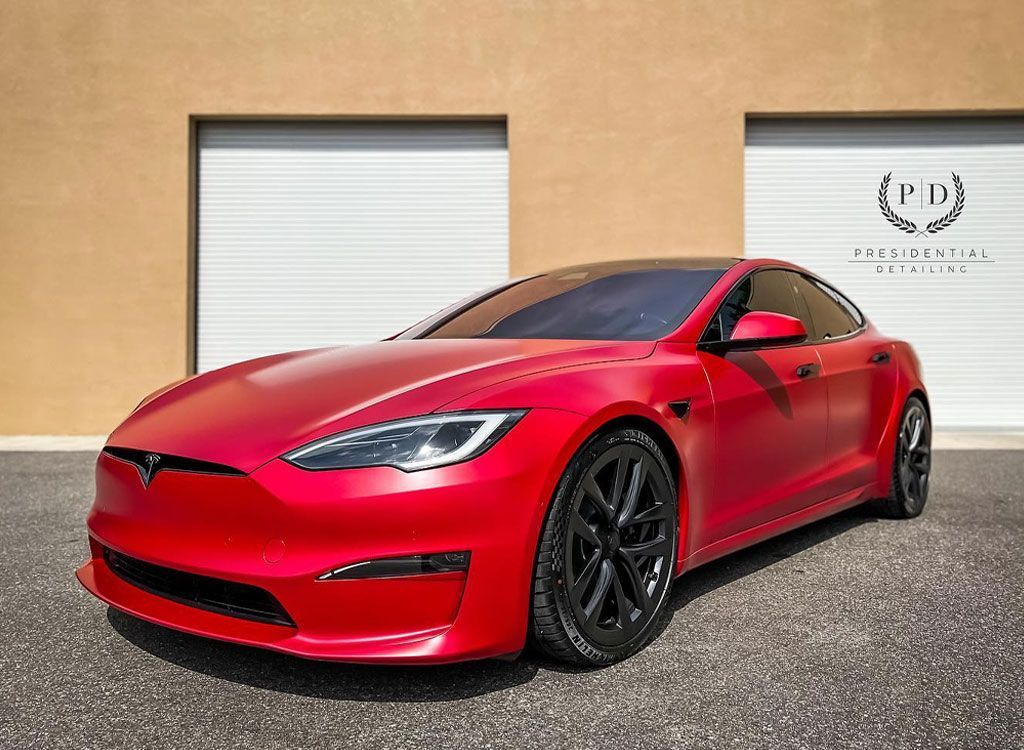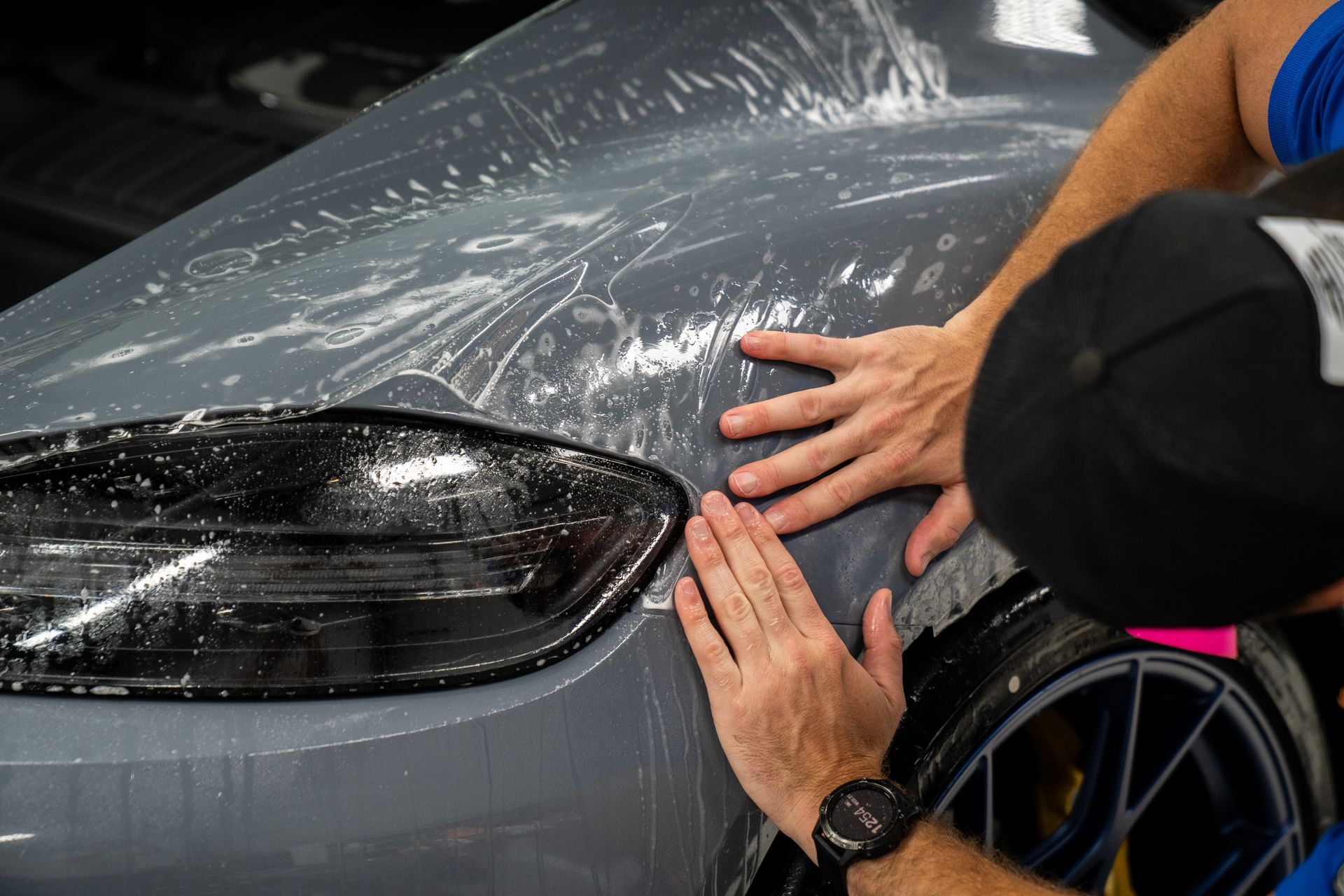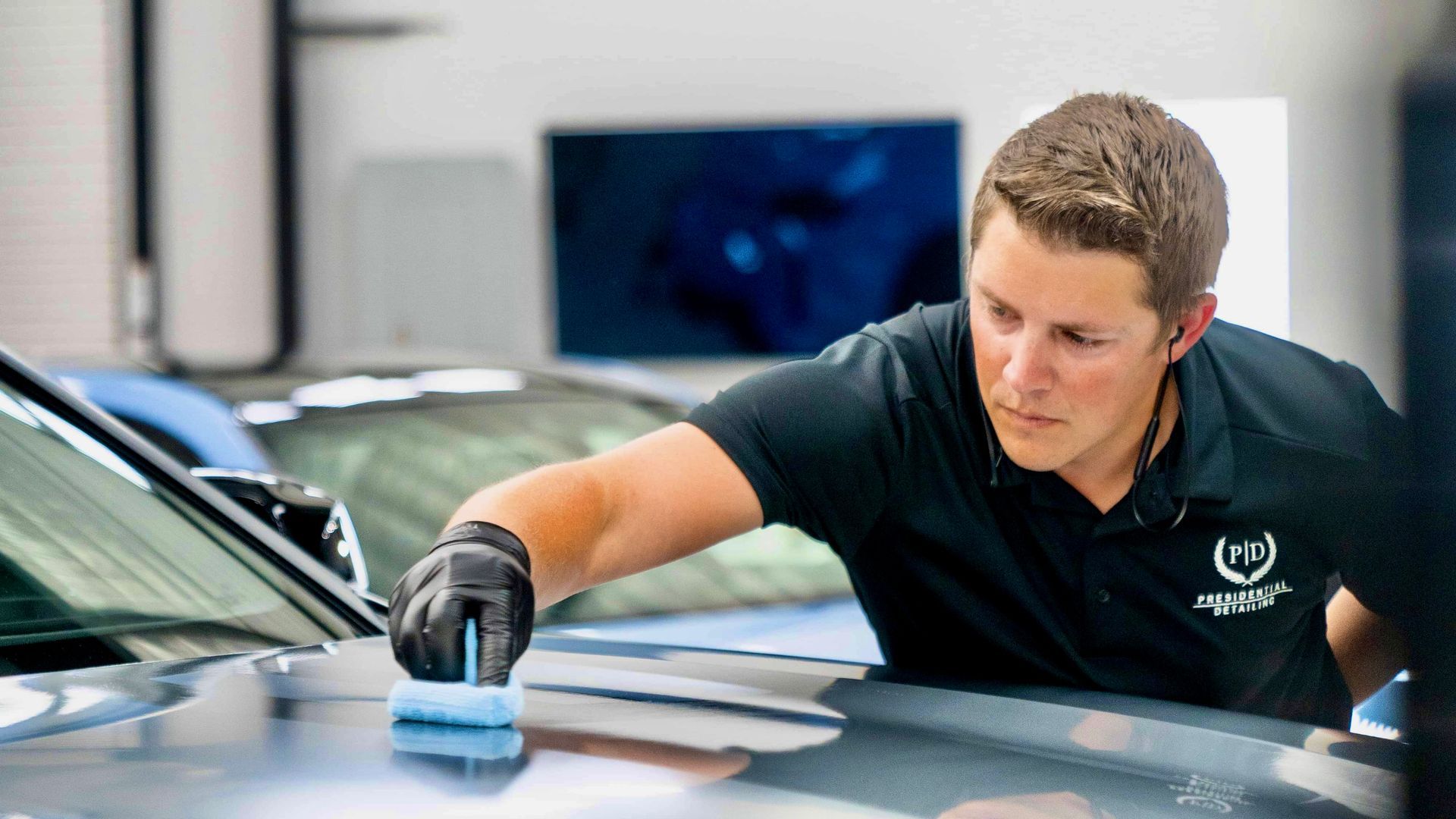Importance of Regular Maintenance for Professional PPF: Ensuring Vehicle Protection
CALL (813) 723-9679
GET A FREE ESTIMATEWhen you invest in professional paint protection film (PPF) for your vehicle, it’s not just a simple upgrade; it's a commitment to maintaining your car's appearance and value. Think of paint protection film as a shield against scratches, chips, and fading from the sun. However, your PPF requires ongoing attention to keep it performing at its best. Neglecting maintenance can lead to unsightly wear and tear that undermines its protective benefits.
Regular maintenance of professional paint protection film is essential as it ensures the longevity and effectiveness of the film in protecting your vehicle's paint from environmental pollutants, road debris, and wear over time. Neglecting this upkeep can lead to rapid deterioration of the PPF, potentially resulting in costly repairs or decreased performance of the protective layer.
Importance of Regular PPF Maintenance
Regular maintenance of paint protection film is crucial in safeguarding your investment, ensuring that both the film and the car's underlying paint remain in pristine shape. When you choose to maintain your PPF diligently, you're not just delaying deterioration—you're actively enhancing its performance.
Prolongs Film Life
The first aspect to consider is how this maintenance prolongs the life of the film. Just like a well-cared-for garden thrives, a regularly maintained layer of PPF can withstand environmental pollutants much better than one that's been ignored. A paint protection film is engineered to endure various external threats, including road debris and harmful UV rays. However, without consistent upkeep, these elements can accumulate, creating a barrier that fosters wear and tear on the film. Over time, this neglect can lead to significant degradation, reducing its effectiveness and lifespan dramatically.
Maintains Aesthetics
Keeping your paint protection film clean doesn’t just protect it physically; it preserves its visual integrity as well. Regular washing prevents contaminants from embedding themselves into the film, which helps maintain clarity and shine. Imagine looking at your vehicle—all glossy and vibrant—only to have that replaced by a drab appearance due to neglected PPF. A layer that isn't cleaned routinely may develop cloudiness or yellowing, diminishing its original brilliance and significantly detracting from your vehicle's aesthetic appeal. Maintaining your film ensures that it complements rather than detracts from your vehicle’s overall look.
Key Steps in Maintaining PPF
Maintaining your paint protection film is essential for keeping your vehicle looking fresh and protected over time. With the right routine and techniques, you can maximize the lifespan and effectiveness of your PPF while preserving your car’s sleek appearance.
- Regular Washing: Wash your vehicle at least once a week using a pH-neutral car shampoo. This type of soap helps prevent the breakdown of the film’s surface while maintaining its clarity and protective qualities. Consistency with washing ensures that dirt and contaminants don’t accumulate, which can degrade the film.
- Two-Bucket Method for Cleaning: Use the two-bucket method when washing to avoid scratches on the paint protection film. Fill one bucket with soapy water and another with clean water to rinse your wash mitt, keeping the cleaning solution free from dirt. This minimizes the risk of scratches, preserving both the look and function of the protective film.
- Quick and Careful Drying: After washing, dry the paint protection film immediately with a microfiber towel, which is gentle on the film and absorbs excess moisture effectively. Avoid air drying, as it can leave behind water spots, detracting from the car’s appearance. Gently buffing with a towel not only dries the surface but also gives the film a polished, enhanced shine.
- Routine Inspections for Damage: Monthly inspections are vital for spotting early signs of damage, such as scratches, peeling edges, or discoloration. Identifying these issues early can prevent costly repairs or complete replacements of the film. By staying vigilant, you maintain both the film’s protective capabilities and the vehicle’s aesthetic appeal.
By incorporating these straightforward maintenance practices, you’ll ensure that your paint protection film remains effective and attractive for years. Regular care not only protects your car’s paint but also preserves the investment in your PPF, allowing you to enjoy a pristine, well-protected vehicle.
Benefits of Consistent Care
Consistent care for your paint protection film offers numerous benefits that every car owner should consider. Regular maintenance not only preserves the appearance of your vehicle but also enhances its longevity and value. Below are some key advantages of consistent PPF upkeep:
- Prolonged Protection: Regular care ensures that your paint protection film continues to protect your vehicle’s paintwork effectively for 5 years or more. This long-lasting barrier shields against UV rays, road debris, and chemical contaminants, keeping your car’s exterior looking pristine over time.
- Enhanced Longevity and Investment: By protecting the underlying paint, you’re investing in your vehicle’s durability and longevity. Regular maintenance of the PPF keeps your car’s paint intact and reduces the likelihood of expensive repainting, making it a sound investment in its overall lifespan.
- Higher Resale Value: Well-maintained PPF can significantly improve your vehicle’s resale value, often adding 10-15% more compared to similar cars without protection. Buyers appreciate vehicles that show signs of proper care, making a well-preserved PPF an attractive feature in the used car market.
- Avoidance of Costly Repairs: Consistent paint protection film maintenance helps prevent extensive wear and tear, reducing the need for repairs or replacements that could cost $500 to $1,000 or more. Regular washing and proper cleaning methods help maintain the film’s integrity.
Investing in regular care for your PPF is a form of preventative maintenance, which can save you significant costs over time. By following recommended care practices, you can avoid common damages and extend the protective qualities of the film, leading to long-term savings. Maintaining your PPF goes beyond aesthetic benefits; it contributes to protection, increased resale value, and cost savings. Embracing regular upkeep allows you to enjoy both immediate and long-term rewards, ensuring your vehicle remains in excellent condition.
Choosing Between Professional and DIY Maintenance
When it comes to caring for your paint protection film, the choice between professional handling and DIY maintenance boils down to factors like expertise, cost, and the quality of results you expect. Professionals come equipped with specialized tools and extensive experience, which can provide meticulous care for the film. For instance, professionals typically use high-quality ceramic coatings that offer a stronger barrier against environmental contaminants like dirt and grime. This added layer enhances the protective capacity of your PPF and makes subsequent cleaning much easier. While professional services offer unmatched results, DIY methods present an attractive alternative for those who prefer hands-on maintenance.
But there's a catch: while DIY methods can be satisfying, they require a solid understanding of proper techniques. Neglecting these can lead to mishaps such as scratches or improper cleaning protocols that degrade your PPF's integrity over time. It's crucial to adopt a gentle handwashing method using dedicated products that ensure neither the film nor the underlying paint gets damaged. While choosing DIY can certainly save money upfront, it demands more commitment in terms of time and effort. Each wash may take a few hours as you prepare the necessary supplies and go through each step carefully, compared to a professional wash that could take just an hour or two.
Your decision should align with your budget, skill level, and how much time you're willing to dedicate to maintaining that pristine shine on your vehicle. If you're looking for a long-lasting solution that guarantees top-notch care, professional maintenance might just be worth every penny spent. Both options have their merits; know your priorities before deciding which route to follow for your PPF maintenance. Whether you choose to do it yourself or seek out the pros, staying consistent with your upkeep routine is essential for keeping your vehicle looking its best while ensuring lasting protection for its paintwork.
Scheduling Your Maintenance Routine
Consistency in your maintenance schedule is crucial for ensuring the longevity of your PPF. The more effort you invest in keeping it clean and damage-free, the better it will perform over time. Regular upkeep isn’t just about aesthetics; it's about creating a protective barrier against environmental elements that can wear down your car’s finish.
- Weekly Tasks: To kick off your routine, aim to conduct a basic hand wash of your vehicle once a week. This is not merely a luxury; it's a fundamental necessity to strip away surface dirt and contaminants that could harm the PPF. A gentle hand wash with specific, PPF-safe car soap will help alleviate these issues before they become stubborn stains that are harder to eradicate. Focus particularly on areas where buildup tends to accumulate, such as wheel wells and around door handles, as these spots can quickly tarnish your film's protective properties.
- Monthly Tasks: Every month, dedicate time for a thorough inspection of the paint protection film. This is where you can spot any signs of damage or wear that could compromise its effectiveness. A close look at the edges of the film is essential because this is where peeling might begin if moisture seeps under it. If you find any scratches or abrasions, address these minor issues immediately rather than letting them fester into bigger problems. By being proactive during these inspections, you're prolonging the life of both the film and the underlying paintwork.
- Quarterly Tasks: Applying a dedicated paint protection film sealant every three months can fortify the film against harsh weather conditions and UV rays while enhancing its shine. Additionally, scheduling a professional check every six months allows experts to evaluate its condition comprehensively—far beyond what an untrained eye could see. Alongside deep cleaning every quarter, you're reducing the likelihood of permanent damage, which ultimately spares you expensive repairs and maintains your vehicle’s resale value.
Keeping up with this meticulous routine may seem like quite a commitment at first glance, but it’s genuinely an investment in peace of mind—knowing that your vehicle is reliably protected against whatever life throws its way. In summary, adhering to a consistent maintenance schedule not only enhances the longevity of your PPF but also ensures optimal protection for your vehicle's exterior.
Best PPF Installers in Tampa, FL
Presidential Automotive Detailing offers premier
paint protection film installation in Tampa, FL, providing an exceptional shield for your vehicle’s finish. Our PPF is expertly applied to guard against scratches, chips, and environmental wear, keeping your car looking pristine and preserving its value. With top-quality film and precision techniques, we ensure a nearly invisible layer of protection that maintains the original look of your vehicle while adding powerful durability. Trust Tampa’s best PPF installers to protect your investment—schedule your installation with Presidential Automotive Detailing today and enjoy peace of mind on every drive. Call us at (813) 723-9679 to get started!
